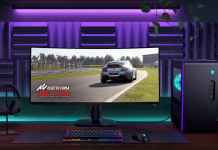![]()
With news this week that Google’s Pixel C tablet is officially finished, it’s time to reflect again on the state (or non-existent state) of Android tablets. Considering there are basically no decent Android tablets being made these days, those wanting a high-performance tablet are left with an iPad, or going down the path of Windows 10 instead (which actually is rather good).
The Pixel C hardware itself was fairly incredible; a tablet with companion keyboard that didn’t require separate charging and was held in place with magnets alone, and that charged from the tablet body itself. In fact, everything about the Pixel C was great, except Google’s baffling decision to put Android on it instead of letting it be ChromeOS (as was rumoured).
Could Android tablets have become a thing? No, not really.
The Pixel C was Google’s last real attempt to convince us that Android could run alright in a tablet, and well .. now we know that really it can’t. Android tablets are all but a thing of history — they’re still made, but those that made frankly aren’t very good. We’re years past major manufacturers making a big song and dance about Android tablets.
If you want an Android tablet experience these days, you’re (in my view, far far) better off buying a ChromeOS device and running your Android apps on that. I do precisely this with Google’s Pixelbook, which runs Android apps, and it does it better than any tablet. Multiple windows, friendly and familiar user interface, and the underlying power of ChromeOS to make it bearable.
The Pixel C had great hardware … but shit software
I enjoyed Google’s Pixel C, a hell of a lot actually, but there were baffling decisions which just rendered it mostly useless. The add-on keyboard wasn’t included – you had to pay extra for it. Even if you did, there was no trackpad area; you could use the keyboard but still had to poke at the screen for touch input, a horribly jarring experience. The hardware was great, but as an early adopter of USB-C, there wasn’t really much you could do with it. Equally, it didn’t have built in LTE, so you had to have some other device in order to get online on the go.
The most stupid decision, though, was tarring this hardware with Android. At launch, with only Android Marshmallow, it couldn’t do split screen. Some apps that weren’t tablet optimised ran sideways (Instagram, for one). There wasn’t a stylus option (though you could buy a capacitive stylus and use that if you must). The OS didn’t feel polished, and it was slow.
You get the feeling that Google kind of knew that the Pixel C would bomb; it didn’t sell widely, and in Australia at least, it mostly disappeared from sale a year ago.
The Pixelbook is what the Pixel C should’ve been
Fast forward to the end of 2017 (and remember the Pixel C was announced in September 2015) and Google’s Pixelbook feels like what the Pixel C should’ve been. It runs ChromeOS (which the Pixel C should’ve), it runs Android apps in multi-window (which the Pixel C should’ve), it comes with a good stylus (which the Pixel C should’ve) and though it’s more expensive, it’s significantly more useful (which the Pixel C should’ve been).
See a trend emerging?
The Pixel C was a product / solution for a problem which didn’t exist, and it didn’t solve it well. The Pixelbook is a high-end laptop which blends the best of ChromeOS and Android, making a product that is far, far more than the sum of its parts.
Keep an eye out in January 2018 for our Pixelbook review … and though it isn’t sold here in Australia, you’ll wish it was.



